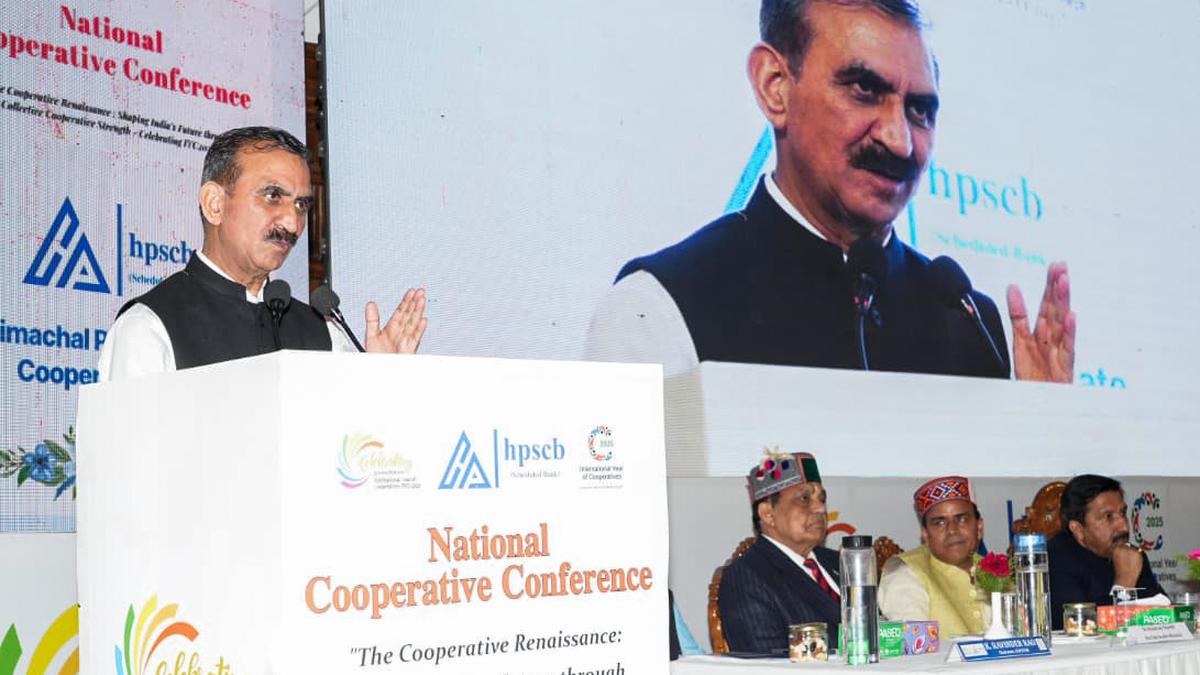From Peer Chhangur to Hizb-ut-Tahrir module to Deoria: Another Islamic conversion racket run by Usman Ansari following the same anti-Hindu blueprint exposed
In Deoria, Uttar Pradesh, a Hindu woman named Sunita (name changed) was sexually harassed and blackmailed for forced religious conversion inside SS Mall, a shopping complex in the heart of the city. The crime was orchestrated by the mall owner, a Muslim man named Usman Ansari Ghani. Ghani specifically employed Hindu girls to sexually exploit them and ultimately blackmail them to give up their faith and convert to Islam. Usman Ansari was arrested while he was trying to flee to Dubai on September 15, 2025. Sunita confirmed that Ghani’s wife, Tarannum and brother-in-law, Gauhar Ansari, were complicit in the crime. Together, they lured Hindu women with promises of steady jobs and good income. Once employed, the women were taken to two rooms on the upper floor of the mall. Here they were subjected to sexual harassment. Then they were pushed into prostitution and brainwashed to convert to Islam. While documenting the Deoria case, Hinduphobia Tracker sensed deeper involvement beyond the immediate facts. It appeared to be part of a larger racket, similar to the Agra conversion racket and the Peer Chhangur network. It also follows the same pattern observed in the Islamic terrorist group Hizb-ut-Tahrir (HuT) module. Hinduphobia Tracker has documented several incidents related to the Agra conversion racket and Peer Chhangur’s network, both of which reveal a clear pattern of systematic targeting of Hindus. These rackets did not operate randomly. It focused on vulnerable sections of Hindu society, including students, women, the poor, and socially disadvantaged communities. It used deception, inducements, and coercion to erode their faith. The methods were deliberate and structured, involving brainwashing sessions, financial lures, and emotional manipulation to sever Hindu individuals from their religious roots. By consistently preying on Hindus, these networks exposed their underlying hostility toward Hindu identity itself. It reduces conversion into a tool of subjugation and exploitation rather than a genuine belief. Together, the Agra racket, Peer Chhangur’s network and now the Deoria conversion racket demonstrate how such operations are not isolated incidents but part of a larger, organised campaign to weaken the Hindu community through targeted proselytisation. Our team visited Deoria to meet Sunita and hear her account firsthand. What emerged was not a single incident but a pattern. Several other former employees of the mall also came forward, describing how Hindu women were routinely targeted. They revealed how Usman Ansari used his financial clout and influence to silence complaints and run what was effectively a religious conversion and sex racket. The testimonies pointed to a disturbing modus operandi. Hindu girls were lured under the guise of jobs and pushed into prostitution. They were told to abandon their religion, adopt Islam, and serve the interests of Ghani and his associates. Those who resisted were blackmailed with explicit videos, threatened with violence, or harassed until they broke down. To live in Deoria you need to convert to Islam and join the nexus: Hindu victim narrates her ordeal Sunita’s testimony is harrowing. She revealed how her employers, Usman Ansari, his wife Tarannum Jahaan, and Tarannum’s brother Gauhar Ansari (also known as Gauhar Khan), systematically harassed her. They pressured her not only to convert to Islam but also to participate in a sex racket that specifically targeted Hindu girls. SS Mall owner Usman Ansari, his wife, Tarannum Jahaan Behind the mall’s polished glass facade, two rooms on the upper floor were turned into sites of exploitation. Sunita explained how women were taken there under different pretexts and then subjected to harassment and abuse. The men would record videos of the assaults, which were later used as tools of blackmail. “One day, they took me to that room and asked me to join them. They ripped my clothes and sexually harassed me. Usman and Gauhar carried out the horrific assault, while Tarannum stood by and watched it all unfold. They recorded the video and threatened me with it,” Sunita narrated, her voice trembling. The pressure was relentless. She was told repeatedly that she would only survive in Deoria if she converted to Islam and joined their network. Refusal, she said, brought threats, humiliation, and physical assault. Sunita eventually left her job, unable to endure the torment. However, even after quitting, the harassment continued. “Even after I left the job, they kept pressuring me. They would call repeatedly and harass me,” she said, adding that the network’s control over her life did not end with her employment. For 2 years, Sunita lived in fear. The pressure to withdraw from society, surrender her faith, and comply with her abusers was overwhelming. She finally decided to approach the police. But the path to justice was not easy. She first went to the local police station in March 2025 and met



In Deoria, Uttar Pradesh, a Hindu woman named Sunita (name changed) was sexually harassed and blackmailed for forced religious conversion inside SS Mall, a shopping complex in the heart of the city. The crime was orchestrated by the mall owner, a Muslim man named Usman Ansari Ghani. Ghani specifically employed Hindu girls to sexually exploit them and ultimately blackmail them to give up their faith and convert to Islam. Usman Ansari was arrested while he was trying to flee to Dubai on September 15, 2025.
Sunita confirmed that Ghani’s wife, Tarannum and brother-in-law, Gauhar Ansari, were complicit in the crime. Together, they lured Hindu women with promises of steady jobs and good income. Once employed, the women were taken to two rooms on the upper floor of the mall. Here they were subjected to sexual harassment. Then they were pushed into prostitution and brainwashed to convert to Islam.
While documenting the Deoria case, Hinduphobia Tracker sensed deeper involvement beyond the immediate facts. It appeared to be part of a larger racket, similar to the Agra conversion racket and the Peer Chhangur network. It also follows the same pattern observed in the Islamic terrorist group Hizb-ut-Tahrir (HuT) module.
Hinduphobia Tracker has documented several incidents related to the Agra conversion racket and Peer Chhangur’s network, both of which reveal a clear pattern of systematic targeting of Hindus. These rackets did not operate randomly. It focused on vulnerable sections of Hindu society, including students, women, the poor, and socially disadvantaged communities. It used deception, inducements, and coercion to erode their faith. The methods were deliberate and structured, involving brainwashing sessions, financial lures, and emotional manipulation to sever Hindu individuals from their religious roots. By consistently preying on Hindus, these networks exposed their underlying hostility toward Hindu identity itself. It reduces conversion into a tool of subjugation and exploitation rather than a genuine belief. Together, the Agra racket, Peer Chhangur’s network and now the Deoria conversion racket demonstrate how such operations are not isolated incidents but part of a larger, organised campaign to weaken the Hindu community through targeted proselytisation.
Our team visited Deoria to meet Sunita and hear her account firsthand. What emerged was not a single incident but a pattern. Several other former employees of the mall also came forward, describing how Hindu women were routinely targeted. They revealed how Usman Ansari used his financial clout and influence to silence complaints and run what was effectively a religious conversion and sex racket.
The testimonies pointed to a disturbing modus operandi. Hindu girls were lured under the guise of jobs and pushed into prostitution. They were told to abandon their religion, adopt Islam, and serve the interests of Ghani and his associates. Those who resisted were blackmailed with explicit videos, threatened with violence, or harassed until they broke down.
To live in Deoria you need to convert to Islam and join the nexus: Hindu victim narrates her ordeal
Sunita’s testimony is harrowing. She revealed how her employers, Usman Ansari, his wife Tarannum Jahaan, and Tarannum’s brother Gauhar Ansari (also known as Gauhar Khan), systematically harassed her. They pressured her not only to convert to Islam but also to participate in a sex racket that specifically targeted Hindu girls.

Behind the mall’s polished glass facade, two rooms on the upper floor were turned into sites of exploitation. Sunita explained how women were taken there under different pretexts and then subjected to harassment and abuse. The men would record videos of the assaults, which were later used as tools of blackmail. “One day, they took me to that room and asked me to join them. They ripped my clothes and sexually harassed me. Usman and Gauhar carried out the horrific assault, while Tarannum stood by and watched it all unfold. They recorded the video and threatened me with it,” Sunita narrated, her voice trembling.
The pressure was relentless. She was told repeatedly that she would only survive in Deoria if she converted to Islam and joined their network. Refusal, she said, brought threats, humiliation, and physical assault.
Sunita eventually left her job, unable to endure the torment. However, even after quitting, the harassment continued. “Even after I left the job, they kept pressuring me. They would call repeatedly and harass me,” she said, adding that the network’s control over her life did not end with her employment.
For 2 years, Sunita lived in fear. The pressure to withdraw from society, surrender her faith, and comply with her abusers was overwhelming. She finally decided to approach the police. But the path to justice was not easy.
She first went to the local police station in March 2025 and met the SHO, then the Circle Officer. Her complaint was brushed aside. She ran from one desk to another, narrating her story, but no one registered a case. According to her, the accused used their wealth and muscle power to block every attempt she made.
It was only when she approached senior officials, including the Superintendent of Police and local MLA Shalabh Mani Tripathi, that her voice began to be heard. She applied in March 2025, but the filing of the FIR was delayed for months. “They said I would be killed if I did not withdraw my case,” Sunita said, adding that she lived in constant dread during this period. Finally, on 7 September 2025, after sustained efforts and pressure from political representatives, an FIR was registered at Kotwali police station.
Former employees expose entrenched network, affirm Sunita’s ordeal is not an isolated case
The Hinduphobia Tracker team spoke with former SS Mall employees and local witnesses. They confirmed that Sunita’s ordeal was far from an isolated case. Multiple testimonies pointed to a recurring pattern where Usman Ghani and his accomplices trapped Hindu women and controlled staff through a calculated mix of money, false promises, and intimidation. These accounts expose how the mall operated like a closed system, with every detail tightly controlled to suppress the truth and prevent any evidence of exploitation from ever reaching the outside world.
Two former employees, Shah Alam and Ajay, who served as an accountant and a cashier at SS Mall and EG Mart (another departmental store owned by accused Usman Ghani), explained in detail how they were repeatedly instructed to tamper with the surveillance system. They recounted how Usman and his wife, Tarannum, routinely ordered the deletion of CCTV footage that captured Hindu women employees entering and leaving the two rooms from where the accused were running the prostitution racket. The instructions, they said, came without explanation and were presented as orders that could not be disobeyed.
“Every week, some portion of the footage had to be erased,” Ajay recounted. “We knew what was happening inside those rooms on the upper floors, but we were helpless. If we refused, we would not only lose our jobs, but we might also face retaliation.” His words underline how the staff were drawn into complicity, forced to look the other way to protect themselves and their families.
Shah Alam’s brother, Salman, who had previously worked at EG Mart, provided further testimony to the Hinduphobia Tracker team. He recounted that Hindu women employees were subjected to sexual exploitation and coerced religious conversions by the owner, Usman Ghani, and his brother, Sohail Ansari. Explaining his reasons for resigning, he stated:
“I left my job because the environment was not conducive. On the top floor of the mall, there were two private rooms where these activities took place. In the evenings, after the staff had left, a few Hindu women employees were detained and sent to those rooms, where certain traders would exploit them. The following morning, Usman Ansari would arrive at the mall and compel us to delete the CCTV footage. His brother, Sohail Ansari, was also complicit in the crime.”
Salman confirmed that he left his job in November 2024 because of these circumstances.
Hindu employees were isolated and forced to recite Kalma and Hadith
Another name that repeatedly emerged in the Deoria conversion network is Abdurrehman, the manager of EG Mart, a shopping complex in Deoria operated by Usman Ansari in collaboration with his brother Israfil Ansari. His story reflects how deeply these activities have fractured local society.
Abdurrehman was not always known by that name. He was born as Dattatreya Gupta and was married to a Hindu woman named Gayatri Devi. In 2019, both formally converted to Islam, taking the names Abdurrehman and Gulshan Fatima. According to relatives, however, the shift had begun years earlier.

One relative, Veena Devi, recalled a confrontation in 2014, when she noticed Gayatri Gupta quietly performing namaz. “She told me Hindu gods were bad and that only Islam was pure. That was the moment I realised we were losing her. After that, she cut all ties with the family,” Veena said.

Abdurrehman began in a junior role but soon rose to become manager of EG Mart in Deoria. It was in this position, according to multiple testimonies, that he became an active participant in spreading Islamic practices among the mall’s largely Hindu workforce.

Salman further talked about the role of Abdurrehmen in the crime, “He would come every morning and call all the staff together, Hindus included. Then he would conduct Taleem and teach us the Kalma and Hadith,” Salman said. He explained that these gatherings usually took place in the saree section on the top floor, which was treated almost like a classroom.

Abdurrehman’s wife, Gulshan, though not formally employed at the mall, also played a vital role. According to the ex-employee, Salman, she frequently visited the premises, taking Hindu women employees aside into separate rooms where she forced them to adopt Islamic practices. “Gulshan was not on the payroll, but she came often. She would isolate Hindu girls and give them lessons on how to follow Islamic ways,” Salman added.

Together, the couple became instruments of the wider effort to influence, convert, and control Hindu employees in the establishments run by Usman Ansari.
How these ex-employees were targeted for opposing the racket
In time, suspicion grew that Shah Alam and Ajay might one day reveal the truth. In response, Usman and his associates devised a plot to discredit them. Both men, along with Shah Alam’s brother Salman, who was neither an employee of the mall nor present at the time, were falsely implicated in a fabricated theft case. They were taken into custody and publicly branded as criminals. According to the brothers, this was not a matter of misunderstanding but a deliberate attempt to silence them and ensure that no one questioned the activities of the mall’s owners.
The testimony they shared with our team was deeply unsettling. On the day of the supposed theft, Usman telephoned Shah Alam’s mother and sister, claiming that Shah Alam had suddenly fallen ill and needed urgent help. Alarmed, the family rushed to the mall. They took Salman along with them. Once inside, they were held hostage, while Usman deceitfully separated Salman and took him to his house. There, the deception turned into outright extortion. Salman was coerced into handing over ten lakh rupees, the family’s entire savings intended for purchasing a plot of land, and money from his bank account was forcibly transferred into the SS Mall account.
Not content with this, Usman filed a formal complaint accusing Shah Alam, Ajay, and Salman of bribery. The case was fabricated in such a way that it painted all three guilty, despite the absence of credible evidence. The three victims insisted that the complaint was fabricated from beginning to end, designed to silence them because they had witnessed too much.
This account, shared by the brothers and corroborated by others familiar with the events, exposes how financial muscle and coercion were systematically deployed not only to exploit vulnerable Hindu women but also to silence employees who might reveal the truth. It shows how fear and intimidation were built into the very functioning of the mall, creating an environment where the exploitation of Hindu women could continue unchecked.
It was always Hindu girls who were preyed upon, taught how to perform namaz, recite Kalma, and brainwashed against Hindu deities
During our ground reporting, Hinduphobia Tracker spoke to a former female employee, who agreed to share her experience only on condition of anonymity. Her words reinforced Sunita’s (name changed) testimony.
She confirmed that Usman and his aides specifically targeted Hindu women. “Eighty per cent of the women working in the mall were Hindus, and most of the men were Muslims,” she revealed. This underscores how systematic and deliberate the targeting was. The disproportionate presence of Hindu women and Muslim men was not a coincidence but a carefully engineered setup, ensuring that vulnerable Hindu women could be singled out, manipulated, and coerced under the pretext of employment. The Muslim men acted as tools in Usman’s larger plan, interacting directly with the Hindu women, building trust, and creating opportunities for manipulation and coercion, all while keeping Usman himself away from direct involvement. This pattern exposes the calculated nature of the exploitation, where religious identity played a central role in deciding who would be targeted.
“It was always Hindu girls,” she reiterated. “They would be taken on tours outside the district, promised luxury, and slowly brainwashed. Tarannum was central in this process. She would teach them how to perform namaz, how to recite the Kalma, and convince them that Hindu gods were false. She said only Islam was pure.”

The former employee paused, her voice lowering. “I left before I got trapped fully, but many girls could not escape. They stayed because of money or because they were too scared to resist.”
Another victim’s father recounts ordeal: How Deoria conversion racket kingpin Gauhar Ansari deceived, trapped, and converted his Hindu daughter
This wasn’t the first time Gauhar Ansari’s name had surfaced in such matters. In August 2025, he was arrested in connection with the forced conversion of Lakshmi Singh, a 19-year-old Hindu girl from Bardiha Lala village under Khukhundoo police station.
According to her father, Umesh Singh, Gauhar manipulated and lured Lakshmi away on 31 July 2025. She was taken to Delhi, where she was converted to Islam and renamed Salma. “My daughter was taken to Delhi by Gauhar. They converted her and renamed her Salma. She had dreams, but instead she was brainwashed,” Umesh told Hinduphobia Tracker’s team. “I filed the case of kidnapping, and Gauhar was finally arrested. But I know he wasn’t working alone. Usman was behind everything.”
Umesh Singh likened the conversion racket run by Usman Ansari to the notorious Chhangur Peer racket in Bareilly, noting the identical pattern of entrapment: “The formula is the same, lure, brainwash, convert, exploit.”
Police reports confirm that at first, the father filed a complaint, in which he accused Gauhar of kidnapping his daughter. After the complaint was lodged, both Gauhar and Lakshmi were traced and recovered. By this time, Gauhar had already married Lakshmi in a temple. Since Lakshmi was an adult, the court allowed her the right to decide her course of action. Lakshmi, completely brainwashed by Gauhar, decided to go with him.
Her father later filed another complaint, this time accusing Gauhar of forcefully converting his daughter to Islam. He stated that his daughter had been converted and married through deceit and inducement, and that her safety was at risk.
Inspector-in-charge of Khakhundoo, Kalyan Singh Sagar, confirmed that based on Umesh Singh’s complaint, a case was registered against six people, including Gauhar Ansari, for coercion, forced conversion, marriage, and issuing threats. The police investigation established that the accused had deliberately trapped the girl, misled her about his intentions, and pressured her into adopting Islam.

Meanwhile, Lakshmi briefly appeared at the Superintendent of Police’s office to put forward her version, but she was advised to approach the local station first. Soon after, she levelled allegations against her father, complicating the case further. Despite the confusion, police maintained that the circumstances of her conversion and marriage pointed to deliberate manipulation and criminal intent.
Following the investigation, Gauhar Ansari was arrested and remains in jail. His case has become part of a broader pattern linking him with his brother-in-law, Usman Ansari Ghani, who has also been found running a larger network of religious conversions and sexual exploitation in Deoria.
Hindu employees made to wear green clothing
While speaking with former employees, the Hinduphobia Tracker team learned that staff at the mall were forced to wear green uniforms. To verify, the team visited the mall and observed firsthand that all the women employees were indeed dressed in green salwar kameez.
In Islamic tradition, the colour green holds deep religious and cultural significance. It is closely associated with the Prophet Muhammad, who is believed to have favoured green garments, and the Quran describes the people of paradise as being clothed in green silk, symbolising purity, eternity, and divine reward. Over centuries, green has become an emblem of Islamic identity and supremacy, prominently displayed in flags, shrines, and religious insignia.

Against this backdrop, the act of making Hindu employees wear green clothing cannot be dismissed as a simple choice of dress code. It was a deliberate imposition of an Islamic identity marker intended to undermine their Hindu identity. By compelling Hindus to wear a colour that represents Islam, the accused sought to assert religious dominance, subtly erasing Hindu distinctiveness while conditioning the employees to accept symbols of Islam as part of their daily lives. This forced association was both psychological and symbolic, reducing Hindu employees to instruments of religious subjugation and making it clear that their faith was to be sidelined under the shadow of Islamic supremacy.
Local MLA raises concern about the rapid demographic changes taking place in the districts of Uttar Pradesh along the Nepal border
Equally troubling was the institutional indifference that Sunita encountered after her ordeal began. Despite the gravity of her complaint, she found herself trapped in a cycle of apathy. For months, she went to the local police station, submitting applications, detailing the threats, coercion, and deception she had endured. Each time, her words were met with silence. The authorities neither registered her complaint nor offered any form of protection.
This inertia persisted until her family, exhausted yet determined, escalated the matter to higher officials. Only after repeated representations, relentless follow-ups, and mounting public pressure did the case finally move forward. It required the direct intervention of Deoria Sadar MLA Shalabh Mani Tripathi before the police were compelled to act. At last, an FIR was filed naming Usman, his wife Tarannum, and their associate Gauhar as principal offenders.
“The seriousness of this case cannot be overstated,” MLA Shalabh Mani Tripathi told Hinduphobia Tracker. “It carries multiple criminal dimensions and appears to be part of a larger network. The financial trajectory of Usman raises profound questions. Not long ago he was a slipper vendor at the local bus stand, yet today he has control of multiple malls. Such sudden wealth demands scrutiny. Where did the capital come from? Who is financing this expansion? These questions point towards external funding and an organised conspiracy, and they require a full and uncompromising investigation.”
“The situation is deeply alarming,” Shalabh Mani Tripathi further remarked. “Only recently, a series of reports by OpIndia highlighted the rapid demographic changes taking place in districts of Uttar Pradesh along the Nepal border. The proliferation of mosques, madrasas, and the sudden rise in Muslim settlements reveal a disturbing pattern that cannot be ignored. Deoria lies in proximity to that same border region, and it is imperative to examine whether this case is connected to the broader conspiracy unfolding there.”
It is important to mention here that from August 20 to 27, 2022, an OpIndia team visited several areas in Nepal bordering India to observe the ground situation. The reports written by OpIndia then provide several details that directly reinforce MLA Shalabh Mani Tripathi’s concerns.
It documented how villages along the Nepal–Uttar Pradesh border, such as Koilabas in Dang district, have seen a dramatic shift in their demographic and institutional profile. Hindu residents and shopkeepers have left in significant numbers, leaving behind abandoned houses marked with Hindu symbols, while Muslim shopkeepers and village heads now dominate the local economy and politics. The report notes that mosques and madrasas have multiplied rapidly, with estimates of over 150 madrasas and 200 mosques within a 15-kilometre stretch along the border. Many of these madrasas receive government grants, employ clerics from India, and attract Indian students with free food and lodging, pointing toward cross-border influences. Political representation has also tilted, with Muslims occupying key village head positions and even ministerial roles in Lumbini state. Markets are visibly marked with Islamic flags and Arabic inscriptions, while Hindu symbols have faded from public view. Local MPs cited by OpIndia had further stated that Nepal’s Muslim population has doubled in two decades, a shift far steeper than natural growth would suggest. Together, these findings substantiate Tripathi’s argument that what is unfolding in Deoria is not an isolated criminal case but potentially part of a wider, organised demographic and institutional transformation tied to cross-border patterns.
The Peer Chhangur-run Islamic conversion racket
The Chhangur Baba case exposed by the Uttar Pradesh ATS is one of the largest and most sinister Islamic conversion rackets in recent years. Jalaluddin alias Chhangur Baba was arrested in July 2025 for running a nationwide network backed by massive foreign funding of over Rs 500 crores, with money routed through more than 100 bank accounts in Nepal’s border districts. His entire family was involved in the operation, which incentivised Muslim men to lure Hindu women into relationships, sexually exploit them, and then forcibly convert them to Islam. A structured payout system existed- Rs 15–16 lakh for converting Brahmin, Sikh or Kshatriya women, Rs 10–12 lakh for OBCs, and Rs 8–10 lakh for others.
The racket relied heavily on deception, blackmail, and coercion. Muslim men used fake Hindu names to trap Hindu women, who were then converted and married off through Islamic nikaah ceremonies overseen by Chhangur. Victims’ abuse was filmed to ensure silence. Cases included a 15-year-old Hindu girl from Haryana who was sexually exploited, forced into Islamic practices, and blackmailed; a Hindu woman, Manvi Sharma, tricked by a Muslim posing as Rudra Sharma, forcibly converted in Kanpur under Chhangur’s supervision; and Hindu men like Sanchit and Harjeet, who were offered money, threatened, or tortured for refusing to convert. Even Hindu men were targeted with inducements like cash, houses, or jobs, and punished if they resisted.
At its core, the Chhangur Baba network weaponised money, sexual exploitation, and violence to erase Hindu identity. It combined foreign terror-linked funding with systematic grooming jihad, operating not as an isolated crime but as a deliberate anti-Hindu conspiracy designed to alter demographics and assert Islamic dominance.
How Usman’s network mirrors Peer Chhangur’s racket: Financial rise and systematic targeting of Hindus
The case of Usman’s sudden rise from a slipper vendor to the owner of multiple malls bears striking similarities to the infamous racket run by Peer Chhangur. Peer Chhangur’s network was exposed for systematically amassing wealth and influence by exploiting religious, social, and political fault lines, often under the guise of legitimate business. His operations were not just about individual profit but were tied to a larger racket, where financial power was used to alter the religious balance of entire regions. Much like Chhangur’s case, the allegations against Usman raise questions about the source of capital, the speed of his financial ascent, and the possibility of backing from external networks with vested interests in reshaping local demographics.
What makes the parallel even more compelling is that both cases demonstrate how seemingly minor figures with modest beginnings were able to leverage covert support and convert it into outsized social and economic dominance. Peer Chhangur’s racket showed how financial muscle was channelled toward creating religious and political clout, often at the expense of local Hindu communities. Usman’s trajectory appears to follow the same pattern.
In both cases, financial expansion was closely tied to the systematic targeting of Hindus, showing not just opportunism but a deliberate modus operandi. In the case of Peer Chhangur, testimonies and reports had shown how Hindu families were coerced or pressured into giving up their faith, land and property, through a mix of intimidation, debt traps, and orchestrated violence.
Similarly, in Usman’s case, the allegations go beyond mere sudden wealth. His businesses and networks have reportedly functioned by creating a hostile environment for Hindu employees, enforcing cultural impositions such as mandatory dress codes, and Islamic impositions.
The modus operandi in both rackets follows a strikingly similar blueprint. First, rapid financial rise built on suspicious external backing; second, targeting of Hindus through coercion, humiliation, or displacement; and third, channelling the gained assets and influence into strengthening religious and political dominance. In both instances, Hindus were not just incidental victims but the central focus of these schemes, which used economic power and intimidation to alter the social balance. This convergence of financial conspiracy with religiously motivated targeting is why the parallels between Peer Chhangur and Usman are so crucial. They show that these are not isolated cases but part of a recurring model of demographic and religious engineering.
Agra conversion racket and how it is similar in pattern to the Deoria conversion racket
The Agra conversion racket, uncovered under Yogi Adityanath’s Mission Asmita, was a large-scale, terror-linked religious conversion and radicalisation syndicate spanning at least six states. It primarily targeted vulnerable Hindu women and minors through deception, coercion, grooming, and “love jihad,” using tactics that investigators say mirrored those of ISIS. The network had deep foreign links, with funds routed through the dark web and financial trails traced to Canada, the US, London, Dubai, and Gulf countries.
The crackdown led to the arrest of ten accused from Delhi, Goa, West Bengal, Rajasthan, Uttarakhand, and Uttar Pradesh, many of whom were Hindu converts themselves. One of the radicalised women at the centre of the case had even uploaded a profile photo with an AK-47, symbolising her alignment with jihadi ideology. The probe revealed connections to banned outfits like PFI and SDPI, as well as to Pakistan’s ISI and local Christian missionary groups.
Investigators also linked the racket to Jalaluddin alias Chhangur Baba in Balrampur, who ran a parallel Rs 100 crore foreign-funded operation incentivising conversions, particularly of Hindu women. Together, these cases expose an organised, cross-border conspiracy to convert and radicalise Hindus, showing that this is not an isolated crime but a coordinated effort to uproot Hindus from their faith and impose Islamic supremacy.
The Agra religious conversion racket and the Deoria SS Mall case fit into the same larger pattern of organised Hinduphobia, where Hindus were deliberately profiled and targeted for conversion and exploitation. In Agra, the ATS and IB exposed a nationwide syndicate operating across six states, using ISIS-style tactics of grooming, coercion, and love jihad. Vulnerable Hindu women and minors were radicalised, brainwashed with promises of “jannat,” and pulled into a terror-linked network funded through the dark web and foreign sources. Similarly, in Deoria, Usman Ansari used his shopping malls as the front for a localised but equally insidious racket where Hindu women were offered jobs, sexually exploited, blackmailed, and pressured to abandon their faith. Both cases show that Hindus were not incidental victims but the primary targets, chosen because of their religious identity.
The parallels are striking: both rackets used deception and coercion as tools; both relied on psychological manipulation and religious indoctrination to sever Hindu identity; both deployed converted Hindus as active recruiters to expand their networks; and both drew strength from foreign or external funding sources. The Agra case was spread across multiple states with ties to terror outfits like PFI, SDPI, and even ISI, while the Deoria case functioned as a regional module using financial power and local influence to silence dissent. What connects them most strongly is intent: to weaken Hindu society through targeted exploitation of its most vulnerable, especially women, and to replace their cultural and religious identity with Islam. Taken together, Agra and Deoria reveal that these are not isolated incidents of crime but interconnected pieces of a much broader conspiracy of organised Hinduphobia.
Parallel between Usman Ansari’s network in Deoria and the modus operandi of Hizb-ut-Tahrir (HuT)
The forced conversion and exploitation racket run by Usman Ansari in Deoria also mirrors the strategy followed by Hizb-ut-Tahrir (HuT) in both method and intent. At its core, HuT recruits vulnerable individuals, often focusing on Hindus or non-Muslims, through deception, coercion, and ideological brainwashing. The Madhya Pradesh ATS found that HuT cadres lured Hindu youth, forced conversions through marriages, and secretly indoctrinated recruits into extremist ideology, with the ultimate aim of establishing a Sharia-based order. Usman’s mall racket in Deoria exhibits the same pattern. Hindu women were specifically targeted, promised jobs, lured into a trap, sexually exploited, and then pressured to convert to Islam. Just as HuT modules operated through secrecy, clandestine indoctrination sessions, and systematic targeting of Hindus, Usman and his associates ran their operations behind the façade of a shopping complex, using upper floors as hidden centres of coercion and brainwashing.
Another striking similarity lies in the broader objective. HuT seeks to dismantle democratic systems and replace them with an Islamic caliphate, while Usman’s racket, though smaller in scale, functioned with the same ideological foundation: erasing Hindu identity and asserting Islamic dominance. The imposition of green uniforms, enforced recitation of Kalma and Hadith, and the systematic humiliation of Hindu employees were not incidental. They were deliberate steps in a psychological and cultural subjugation process identical to HuT’s method of indoctrinating recruits. Both networks also relied on intimidation, blackmail, and financial power to silence dissent, ensuring that victims remained trapped and fearful. What emerges is a chilling parallel: Usman’s localised racket in Deoria is not just a criminal enterprise but a microcosm of the very strategy that international terror outfits like HuT deploy—deception, coercion, indoctrination, and systemic targeting of Hindus to build influence and alter demographics under the cover of legitimacy.
Why the Deoria conversion racket Usman Ansari’s case represents organised Hinduphobia, not an isolated crime
The case of Usman Ansari in Deoria clearly qualifies as a hate crime against Hindus and warrants inclusion in the Hinduphobia Tracker because the victims were deliberately targeted for their religious identity. Hindu women were lured with job promises, then sexually harassed, blackmailed, and pressured to abandon their faith by reciting the Kalma, performing namaz, and denouncing Hindu deities. This shows direct religious targeting and forced conversions.
Forcing Hindus to recite the Islamic Kalma or follow Islamic principles is not a neutral act of interfaith harmony; it is a deliberate imposition of the Islamic faith over their own Hindu beliefs. Such coercion and imposition infringe upon the rights of Hindus to freely practice their own faith and violate their cultural and religious identity. When Hindu individuals are subjected to such compulsion, it amounts to psychological and emotional harm, as they are compelled to participate in religious prayers that contradict their beliefs, causing confusion, distress, and a sense of alienation.
Furthermore, the perpetrators made derogatory remarks against Hindu deities. This goes beyond religious debate or proselytisation; it constitutes an act of incitement and insult directed at the core beliefs of the Hindu community. Such remarks are designed to demean and undermine the faith of Hindus, fostering an environment of hostility and disrespect.
Beyond sexual exploitation, Hindu employees were economically manipulated and silenced through intimidation and false charges, which reflects financial coercion rooted in religious bias. Symbolic acts of cultural subjugation, such as forcing Hindu staff to wear green uniforms and attend Islamic Taleem sessions, further demonstrate attempts to erase Hindu identity and impose Islamic practices. The sudden financial rise of Usman, coupled with systematic targeting of Hindus, mirrors broader organised conspiracies like those observed across the Nepal border and in the Peer Chhangur racket, showing a clear link between financial power and religious demographic engineering.
The Deoria conversion case underscores a calculated animosity and contempt toward the Hindu faith. The victims were not chosen randomly but specifically targeted for being Hindu, reflecting a mindset rooted in the drive to erase their religious identity. Hindu women were deceived with false promises of jobs, manipulated through financial dependence, coerced with threats and blackmail, and ultimately pressured to embrace Islam. Their exploitation was not merely sexual but part of a broader plan to brainwash and strip them of their Hindu identity. By religiously profiling Hindu women, luring them into vulnerability, and then using them as instruments for exploitation and forced conversion, the perpetrators demonstrated clear hatred for Hinduism and Hindus. This deliberate targeting makes the case a textbook example of an anti-Hindu hate crime and fully warrants its inclusion in the Hinduphobia Tracker.
Why the Hinduphobia Tracker records these cases under ‘Predatory Proselytisation’
Cases like the Usman Ansari racket in Deoria, the Chhangur Baba network in Balrampur, and the Agra conversion syndicate are recorded under the Hinduphobia Tracker’s subcategory of Predatory Proselytisation because they fit the defining features of this pattern: organised, systematic targeting of Hindus through deception, coercion, and exploitation with the explicit goal of religious conversion.
In each of these cases, Hindus were not targeted randomly but were profiled for their vulnerability and specifically chosen because of their faith. In Deoria, Usman Ansari lured Hindu women with job offers, sexually exploited them, and then blackmailed them into abandoning their religion, while also forcing Hindu staff to adopt Islamic practices like namaz and green uniforms. In Balrampur, Chhangur Baba ran a nationwide network backed by foreign funding, offering financial incentives to Muslim men for trapping Hindu women into relationships, coercing them into conversion, and even setting fixed “rates” based on caste. In Agra, Abdul Rehman’s syndicate targeted Hindu girls and youth online, grooming and radicalising them with promises of “jannat” and recycling converts into recruiters for further expansion, with links to terror funding and ISIS-style tactics.
What unites these cases under predatory proselytisation is the use of manipulation, grooming, sexual exploitation, blackmail, financial inducements, and fear as tools to push conversions. Unlike voluntary change of faith, these were not acts of free will but predatory schemes that stripped Hindus of their identity under duress. The predatory nature lies in exploiting the victim’s economic vulnerability, emotional needs, or social frustrations, then weaponising these against them to break their resistance.
By recording such cases under this subcategory, the Hinduphobia Tracker highlights that these are not isolated crimes but part of an organised Hinduphobic strategy where conversion is pursued not through dialogue or conviction but through deception, coercion, and exploitation.
The Hinduphobia Tracker has documented 945 global incidents of Predatory Proselytisation, of which 477 (50.48 per cent) cases involved conversion to Islam and 440 (46.56 per cent) cases involved conversion to Christianity. This data reflects incidents documented from its inception until 15 September 2025.

In India alone, out of 877 documented incidents, 413 (47.9 per cent) cases involved Muslim conversions and 438 (49.94 per cent) involved Christian conversions. The number of women victims in India amounts to 359, out of which 291 (81.05 per cent) involved Muslim conversion and 62 (17.27 per cent) involved Christian conversion. Similarly, the number of minors who have been targeted stands at 217 of all victims, of which 171 (78.80 per cent) were targeted for Muslim conversion and 39 (17.97 per cent) for conversion to Christianity.
Originally published on Hinduphobia Tracker




















































































































